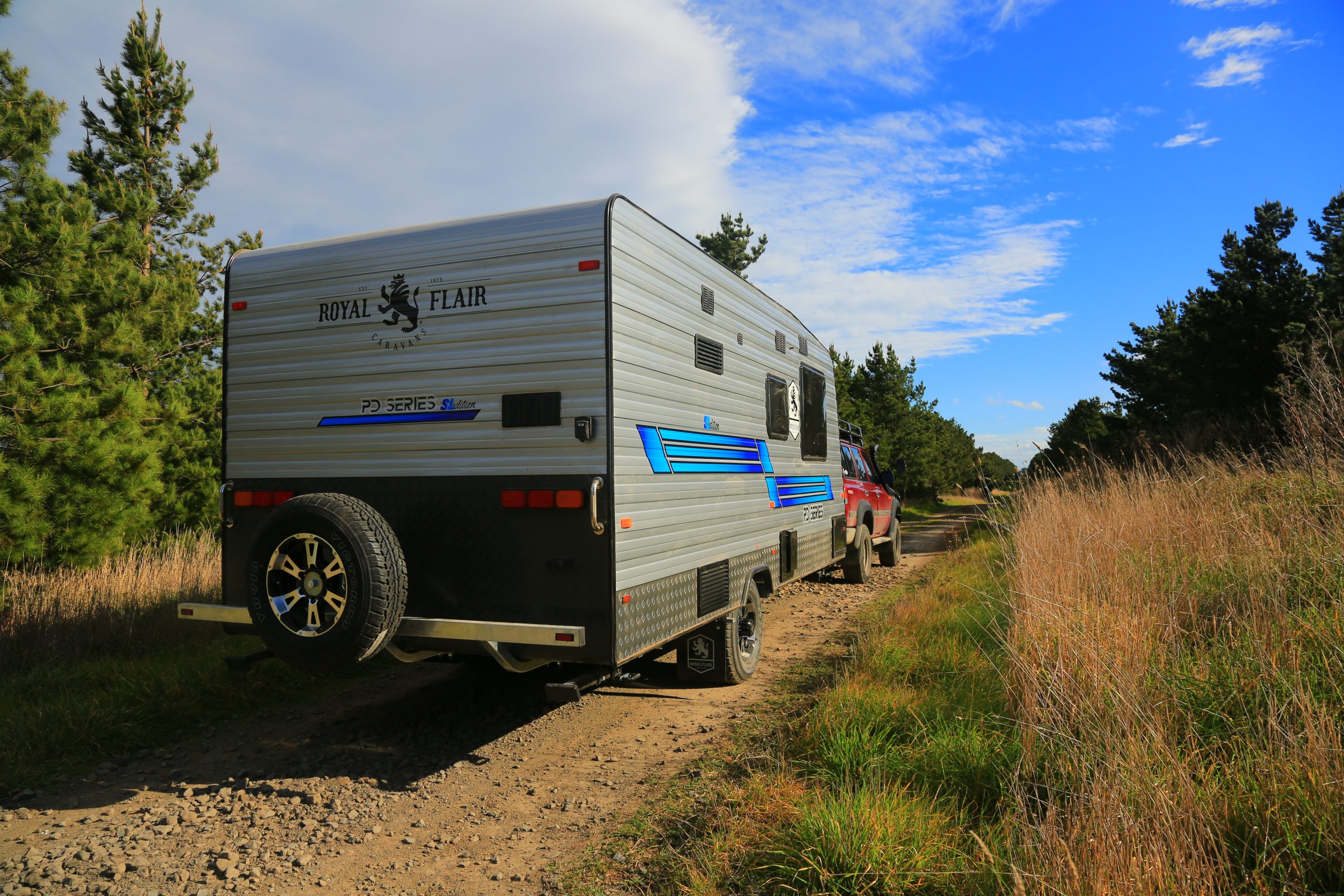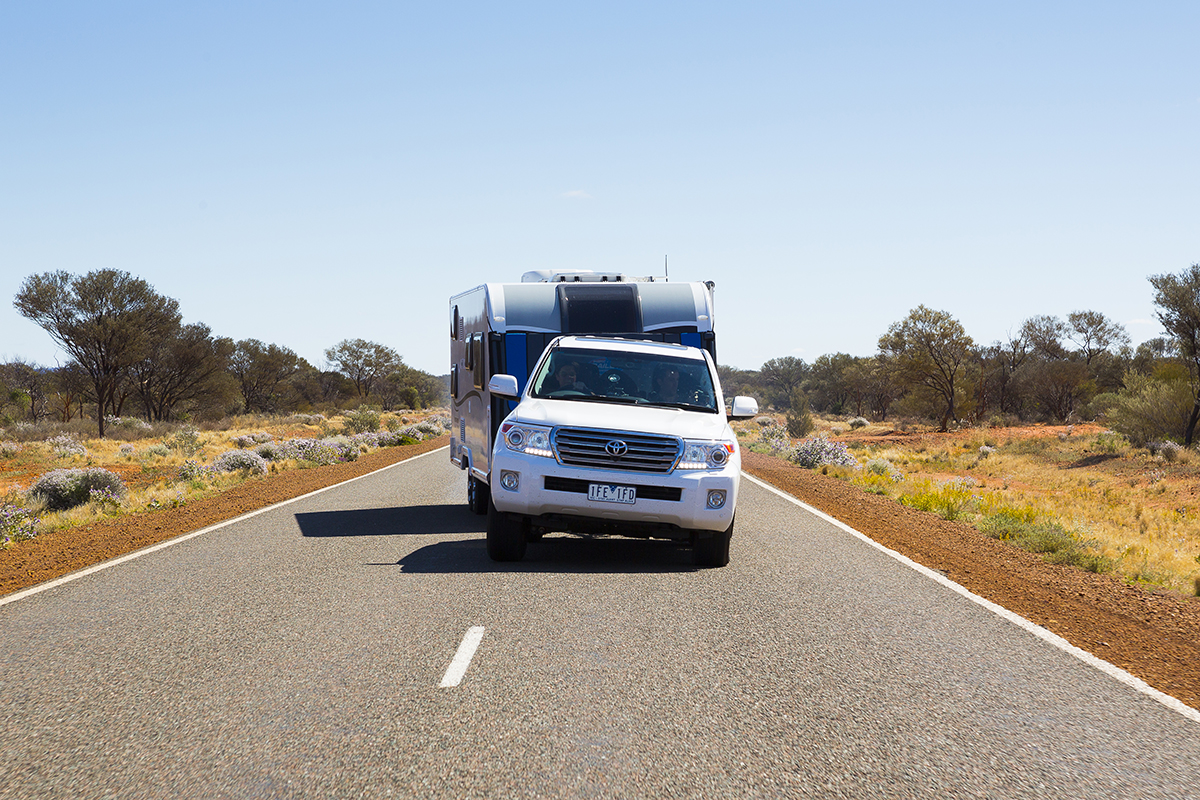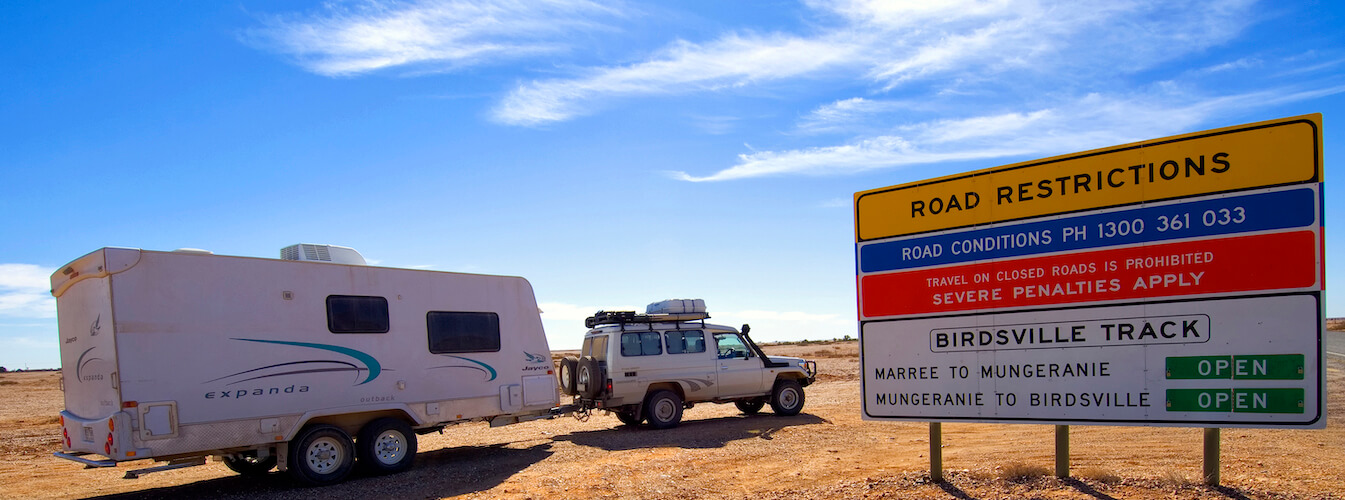Have you ever towed a garden trailer loaded up with rubbish and taken it to the tip? If so, you probably noticed it took a lot longer for your vehicle to brake to a complete stop. Now, imagine that trailer weighed a couple of tonnes. Relying on the tow vehicle’s brakes alone would have two outcomes: rapidly worn brake pads; and, worse, a car accident sooner or later.
If your camper trailer or caravan weighs between 750kg and 2000kg Gross Trailer Mass (GTM), it must have a braking system on the wheels of at least one axle.
Any trailer weighing from 2001kg to 4500kg GTM must have a braking system on all wheels, regardless of the number of axles.
An electric braking system is the most common variety, with the system controlled by an in-cab-mounted electric brake controller.
There are two types of electric brake controllers available: proportional (inertia-sensing) controllers; and time-delayed (solid-state) controllers.
PROPORTIONAL BRAKE CONTROLLERS
Proportional controllers use an accelerometer that ‘senses’ the rate of the tow vehicle’s deceleration, sending an electrical signal to the trailer’s brake magnets that will ensure the trailer brakes at the same rate as the tow vehicle.
Some proportional brake controllers need to be fitted at a certain angle/level or set-up manually to suit the angle of installation, but once installed correctly, they effectively become ‘set and forget’ pieces of equipment.
TIME-DELAY BRAKE CONTROLLERS
Time-delay brake controllers are less sophisticated. Essentially, they apply an increasing amount of power that’s fixed over time (gain). These controllers can be mounted at any angle and are fully adjustable from the driver’s seat.
MAKING ADJUSTMENTS
It is a good idea – in fact, it’s common sense – to ensure that the van’s braking system is operating correctly at the beginning of every leg of every trip.
If your controller is the time-delay variety, changes to the load inside the van (such as emptied water tanks) can affect the braking ‘force’ required, and wet weather might warrant increased caravan braking, too.
On a quiet street with minimal traffic, apply the tow vehicle’s brakes – if the van’s brakes ‘grab’ too aggressively, dial them back on the controller. But if it feels like the van is pushing the tow vehicle when you brake, you’ll need to increase the adjustment. Smooth, consistent braking is the aim.
If you have a proportional brake controller, a daily test to ensure the braking system if properly operational is still a good idea.
It is not implausible, for example, that the brakes on one wheel could stop working, whether due to a wiring issue or a loose brake magnet. With the brakes working on only one wheel, a dangerous sway could develop, especially if braking heavily in an emergency.
REDUCING SWAY
The best ways to reduce or eliminate caravan sway entirely are to ensure the caravan is loaded correctly, that it is being towed by a legal and suitable vehicle, and that the van is fitted with a sway control system, such as AL-KO Electronic Stability Control. It’s worth noting that all caravan sway control systems are compatible with electric brake controllers.
If your van does not have sway control and does experience a sway event, your first move should be to apply the brake controller’s manual override function, without slowing down the tow vehicle. This will break the van independently of the tow vehicle, creating tension between the two and ‘stretching’ them out to eliminate the sway.
This action should be as familiar and natural to you as it is to change gears or use the indicator.
Find out more about proportional electric brake controllers and how to install a brake controller!
MEET THE AUTHOR

Max Taylor
Max Taylor has been caravanning since he was a kid and was the editor of some of Australia’s most well-known RV publications for almost 10 years.





